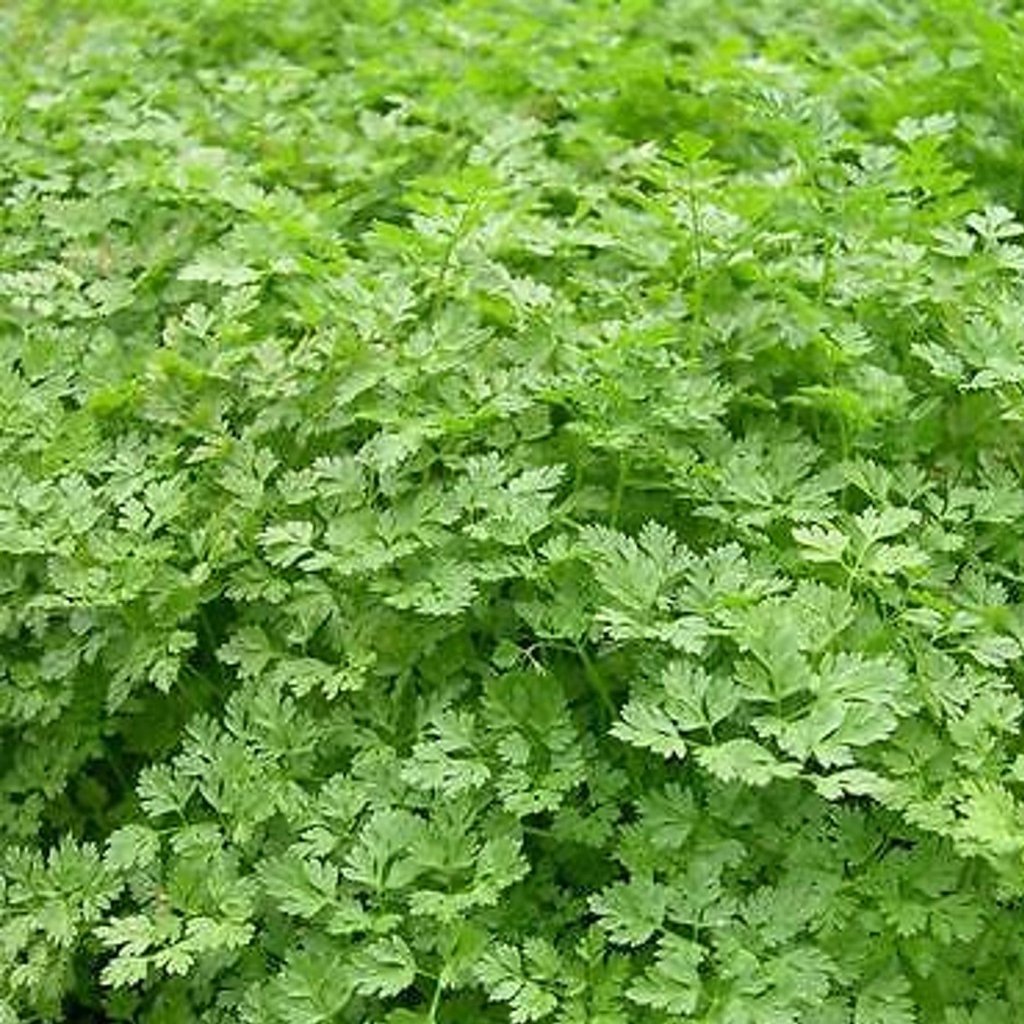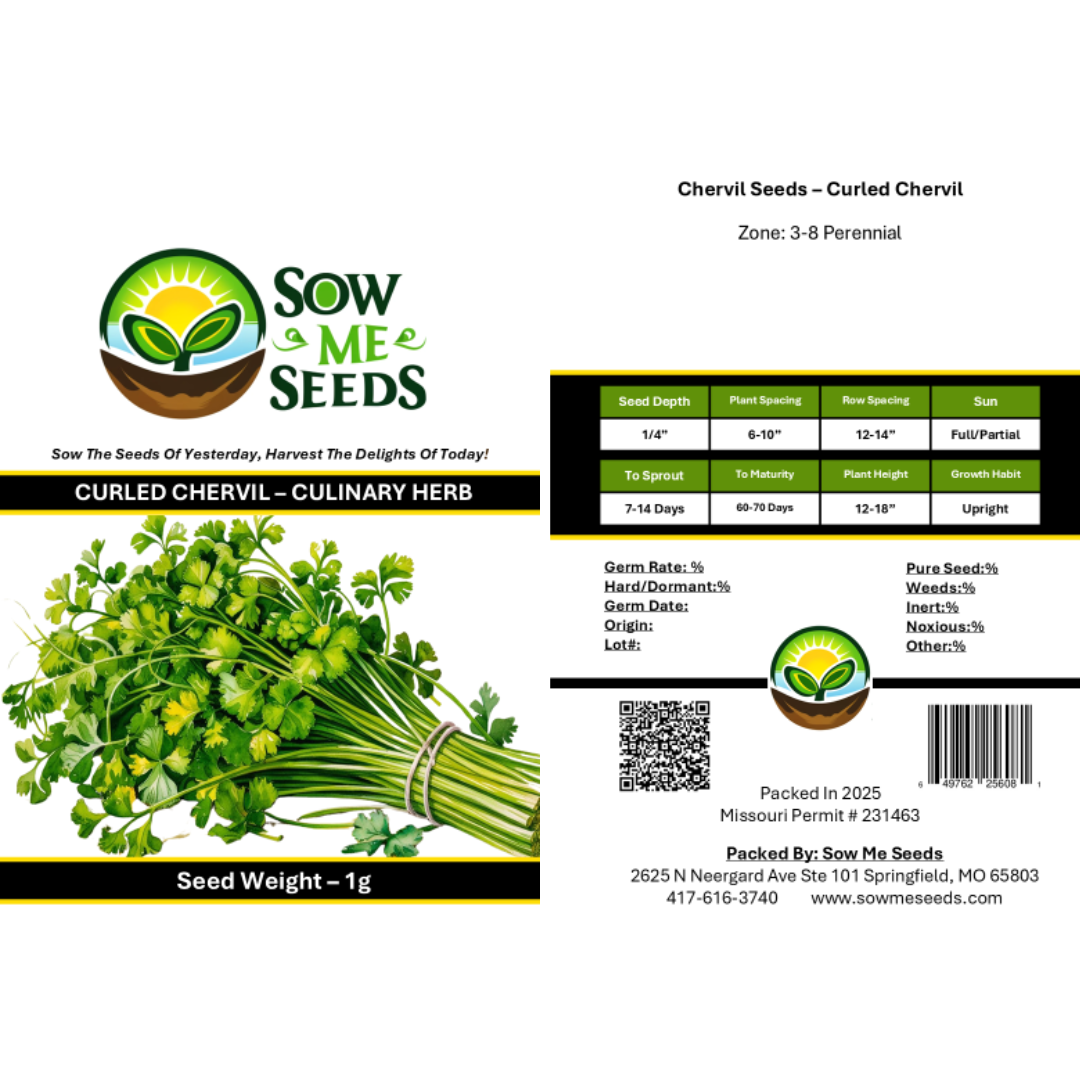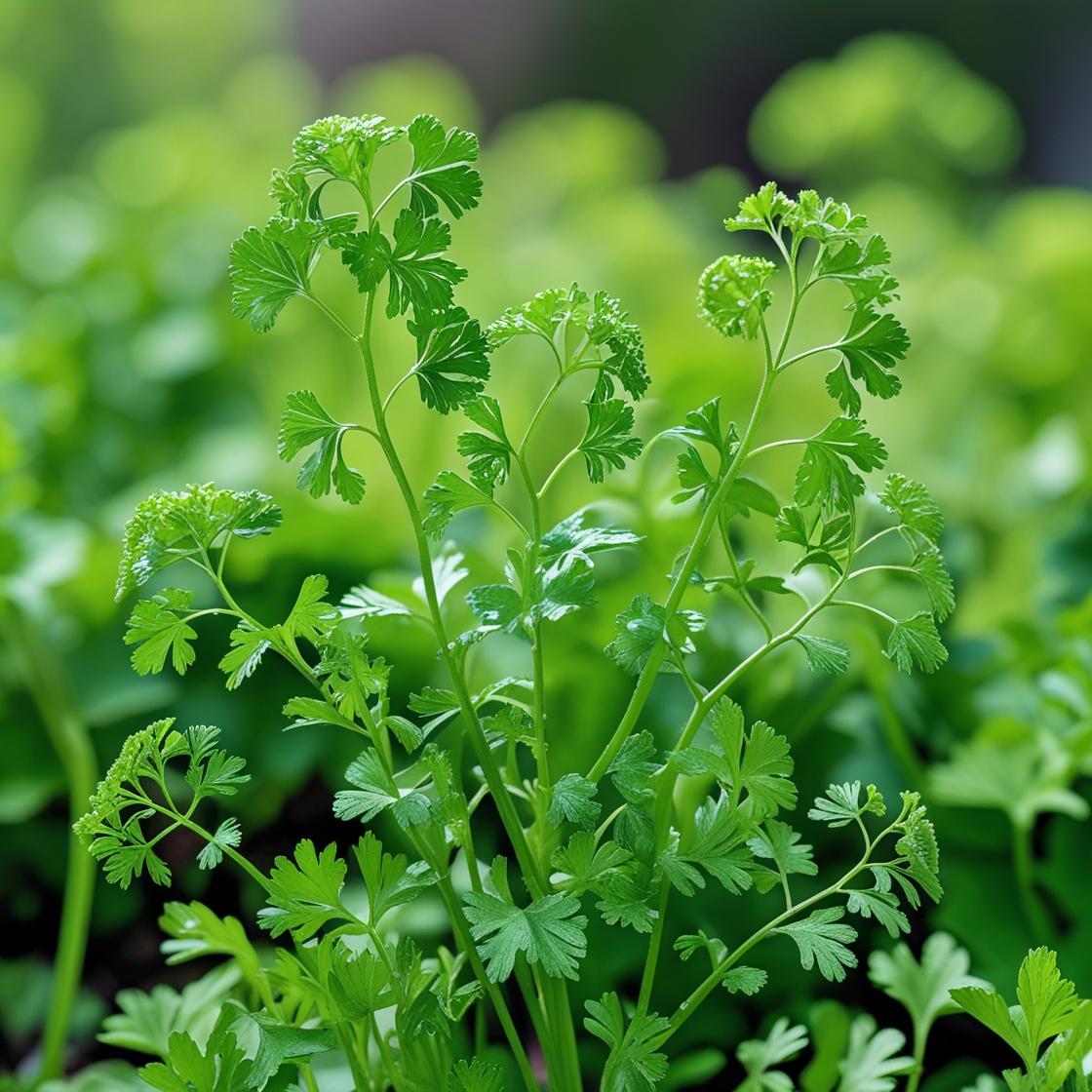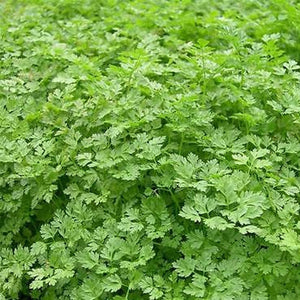- Hardiness Zone: 3-7 Perennial
- Hardiness Zone: 7-10 Biennial
Seed Depth: ¼ inch
Seed Spacing: 2–3 inches
Row Spacing: 12–18 inches
Sunlight: Partial shade to full sun (prefers cooler, shaded areas)
Days to Sprout: 10–14 days
Days to Maturity: 60–75 days
Growth Habit: Upright and bushy with finely divided foliage
Sunlight: Choose a location that receives partial shade, especially in warmer climates. Chervil prefers cooler conditions and can tolerate full sun in cooler regions.
Soil: Prefers well-drained, fertile soil with a pH between 6.0 and 7.0. Amend the soil with compost or well-rotted manure to enhance fertility and drainage.
When to Plant: Chervil is a cool-season herb that can be planted in early spring or fall. Sow seeds directly in the garden as soon as the soil can be worked in spring, or in late summer for a fall crop.
Direct Sowing: Sow seeds directly in the garden 1/4 inch deep and 6 inches apart in rows spaced 12 inches apart. Chervil has a tendency to bolt in hot weather, so choose a cool, shaded spot for summer sowings.
Succession Planting: For a continuous harvest, sow seeds every 2-3 weeks throughout the growing season.
Watering: Keep the soil consistently moist but not waterlogged. Water chervil regularly, especially during dry periods. Mulch around the plants to retain soil moisture and suppress weeds.
Fertilization: Chervil benefits from moderate feeding. Apply a balanced fertilizer or compost at planting time. Avoid over-fertilizing, as this can lead to excessive leaf growth at the expense of flavor.
Mulching and Weeding: Apply a layer of mulch around the plants to retain soil moisture, suppress weeds, and keep the soil temperature consistent. Hand-pull weeds carefully to avoid disturbing the shallow roots of the chervil.
Pest and Disease Management: Chervil is relatively pest-resistant but can occasionally suffer from aphids and fungal diseases like powdery mildew. Use organic pest control methods like neem oil or insecticidal soap if necessary. Ensure good air circulation to prevent fungal issues.
When to Harvest: Chervil can be harvested as soon as the plants have several sets of true leaves, typically 4-6 weeks after planting.
How to Harvest: Harvest individual leaves as needed by pinching off the outer leaves first, allowing the inner leaves to continue growing. For a larger harvest, cut the entire plant 1-2 inches above the soil level. Regular harvesting encourages new growth and helps prevent bolting.
Storing Fresh Chervil: Freshly harvested chervil can be stored in the refrigerator for up to a week. Place the stems in a glass of water and cover the leaves loosely with a plastic bag. Chervil does not dry well, so for longer storage, it is best to freeze the leaves.
Culinary Uses:Chervil's mild, anise-like flavor enhances a variety of dishes. Use it fresh in salads, soups, sauces, and as a garnish for fish and poultry. It is a key ingredient in "fines herbes," a classic French herb blend.
Why You’ll Love It
Elegant Flavor: Subtle notes of licorice and parsley elevate soups, salads, and sauces.
Cool-Season Favorite: Thrives in early spring and fall, with improved heat resistance in shaded areas.
Fine Texture: Lacy, curled leaves add a refined touch to herb gardens and garnish plates beautifully.
Quick and Easy: Fast-growing and ideal for succession planting in partial shade.
Plant Characteristics
Height: 12–18 inches
Growth Habit: Upright, airy, and bushy with finely curled foliage
Leaf Type: Bright green, frilly, parsley-like leaves
Days to Maturity: 60–75 days
Hardiness: Cool-season annual
Flavor and Culinary Uses
Flavor: Mild and slightly sweet with subtle licorice notes
Culinary Uses: Perfect in herb butters, vinaigrettes, egg dishes, soups, and the classic French fines herbes blend
Companion Planting Tips
Good Companions: Lettuce, spinach, peas, and radishes
Avoid Planting Near: Fennel or dill — may cross-flavor or inhibit growth
Bonus Benefit: Performs well in partial shade and cooler microclimates of the garden
Common Issues and Solutions
Bolting in Heat: Provide partial shade and keep soil moist to delay flowering
Slow Growth: Sow early and thin seedlings to promote air circulation and healthy development
Damping Off: Avoid overwatering and ensure good drainage when starting seeds indoors
Seeds Per Packet
| 1g | Approximately 425 |
| 3g | Approximately 1,275 |
Why You’ll Love It
Elegant Flavor: Subtle notes of licorice and parsley elevate soups, salads, and sauces.
Cool-Season Favorite: Thrives in early spring and fall, with improved heat resistance in shaded areas.
Fine Texture: Lacy, curled leaves add a refined touch to herb gardens and garnish plates beautifully.
Quick and Easy: Fast-growing and ideal for succession planting in partial shade.
Plant Characteristics
Height: 12–18 inches
Growth Habit: Upright, airy, and bushy with finely curled foliage
Leaf Type: Bright green, frilly, parsley-like leaves
Days to Maturity: 60–75 days
Hardiness: Cool-season annual
Flavor and Culinary Uses
Flavor: Mild and slightly sweet with subtle licorice notes
Culinary Uses: Perfect in herb butters, vinaigrettes, egg dishes, soups, and the classic French fines herbes blend
Companion Planting Tips
Good Companions: Lettuce, spinach, peas, and radishes
Avoid Planting Near: Fennel or dill — may cross-flavor or inhibit growth
Bonus Benefit: Performs well in partial shade and cooler microclimates of the garden
Common Issues and Solutions
Bolting in Heat: Provide partial shade and keep soil moist to delay flowering
Slow Growth: Sow early and thin seedlings to promote air circulation and healthy development
Damping Off: Avoid overwatering and ensure good drainage when starting seeds indoors
Seeds Per Packet
| 1g | Approximately 425 |
| 3g | Approximately 1,275 |





Share and get 15% off!
Simply share this product on one of the following social networks and you will unlock 15% off!